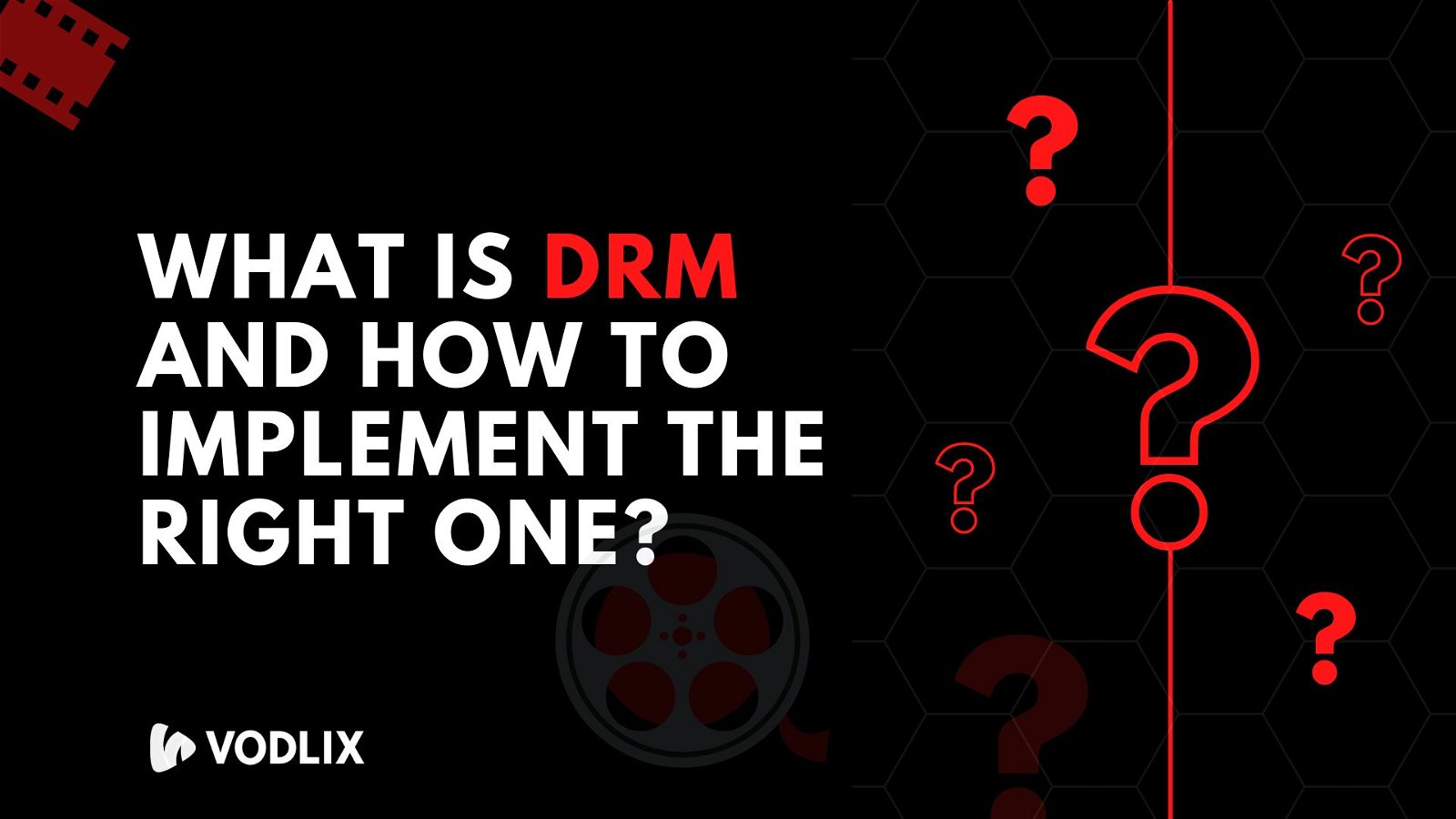Digital rights management systems are software programs to protect copyrights for digital media. They help companies to protect and control their valuable digital content. Digital Content can be in any form for instance documents, videos, images, or audio files. DRM systems use technologies that restrict the copying and use of copyrighted works and proprietary software.
Publishers and authors of digital content control and limit the paying users to what they can do with their work. Companies implement digital rights management systems or processes to prevent users from unauthorized use and avoid legal issues. Today, DRM is playing a growing role in data security.
What Is DRM And How To Implement The Right One?
This article discusses the definition of DRM and provides guidance on how to choose and implement the appropriate system.
January 27th, 2022

What are Digital Right Management systems (DRM)?
How does Digital Rights Management (DRM) work?
DRM takes a proactive approach by creating barriers to stealing digital content in the first place and protecting it from illegal activity. There are various approaches and methods that DRM adopts to protect the content. Many DRM tools use encryption methods, or computer code embedded in the digital content, to limit access or use. Multiple actions can be controlled with these tools including control of the device, people, and time periods that the content that can be installed or accessed.
Below are a few DRM tools and processes that daunt the illegal use of copyrighted material:
Copy protection
Copy protection strategies are the control access that prevents the user from making copies of the work. They are usually implemented through encryption. Digital content is written in a code that can only be read by devices or software with the key to unlock the code. This approach is also known as scrambling. Other good examples of copy protection are to include a digital watermark, fingerprinting, and restricting copying features such as rootkit software.
Permission management
This form of control limits who has permission to use a certain work. Examples of these DRM strategies include software licenses and keys, user authentication and IP authentication protocols, proxy servers, virtual private networks (VPNs), regional restriction or geo-blocking, and designing products to only work on specialized hardware or software.
Many creators of digital content employ multiple DRM strategies to restrict or control the use of their works.
Benefits of Digital Rights Management (DRM) Software
The following are some key benefits of selecting digital rights management (DRM) software:
Prevent piracy of your valuable intellectual property.
Only authorized individuals will see by controlling the access to your content.
Authorized users will be allowed to access your protected content without the need for plug-ins or 3rd party apps.
Integrate and apply various content controls to your content such as print and copy restrictions, watermarks, data limits, device limits, and more.
Activate or cancel user access at any time.
Track the activity of your users.
Protected and controlled IP by improving your bottom line with the assurance of your valuable content.
Digital Right Management systems (DRM) Use Cases
DRM technology has been widely used and practiced in the range of digital material that includes videos, music, eBooks, proprietary business information, software, and database subscriptions. DRM is not only used to hinder authorized copying but also to restrict people from changing creator/developer work or misusing it in a way they are not intended to develop or create.
Let’s discuss some examples here. The Apple iTunes Music Store limits the number of devices that songs can be played on by using DRM. Audio files downloaded from the iTunes music store include detailed data about the purchase and usage activity, and the songs will not play on unauthorized devices. Apple’s iBooks is protected by Apple’s FairPlay technology, which requires iBooks to be read on Apple devices.
Microsoft developed DRM technology called PlayReady to restrict the unauthorized use of audio/video content over the content and make the distribution of the content more secure and safe. All Microsoft users must agree to a user license and input a key before installing Windows or Office software.
A wide range of businesses uses DRM technology to protect sensitive documents, from contracts and strategic plans to confidential employee data. DRM tools can control who can access files and how they can be used. They can prevent files from being altered, saved, duplicated, or printed; and track when they are viewed.
8 Reasons to Implement a Content Protection and DRM Solution
Below are the 8 powerful reasons to implement a content protection and DRM solution:
To protect revenue streams
To increase ROI and profit
To protect intellectual property
To earn more revenue through multi-tiered subscriptions
To gain more members and membership revenue
To restrict unauthorized access
To prevent password sharing
To prevent content piracy
Many companies including educational providers, research and advisory firms, associations, standard organizations, and other content publishers or providers are generating revenue from the content. Whether they generate revenue through direct selling of eBooks, standards, research reports, training videos, or from paid memberships or subscriptions, their digital assets/content need to be controlled and protected from unauthorized access. Content owners and creators can lose their potential revenue if their data is left unprotected. They can easily be re-shaped, printed, copied, or mass distributed though if you have hidden the content in a secured website, portal, LMS, or other systems, you’re only protecting the ‘house’ where the content is located you’re not protecting the actual content or individual files.
Content protection and digital rights management software can help you eliminate unauthorized access or inadvertent sharing ensure that only those paid customers will receive the content they have paid for, and impose the limits you have set.
The key to truly effective IP protection for your digital content is to add a file-level content protection and digital rights management (DRM) solution to prevent all sorts of unauthorized access and leaks. Digital piracy is an endless threat to content in any format.
A digital rights management (DRM) solution can help you protect content from potential threats as you can grant access to only the specified audience with certain restrictions placed on the content (no printing, no copying, no sharing) or certain limits imposed on the user (device limits, IP address limits, open limits). You can also control the access with expiry dates or revoke access at any time if you suspect any fraud or malfeasance.
Good content protection and DRM software allow you to apply file-level control and user-level control to prevent unauthorized access, sharing, downloading, and even printing, ensuring that only your paid clients can access the content, giving you the control you need to protect your revenue streams and help you earn more revenue too! Try Vodlix with its powerpack DRM solution that can protect your content from potential threats and also multiply your revenue with its monetization model.
